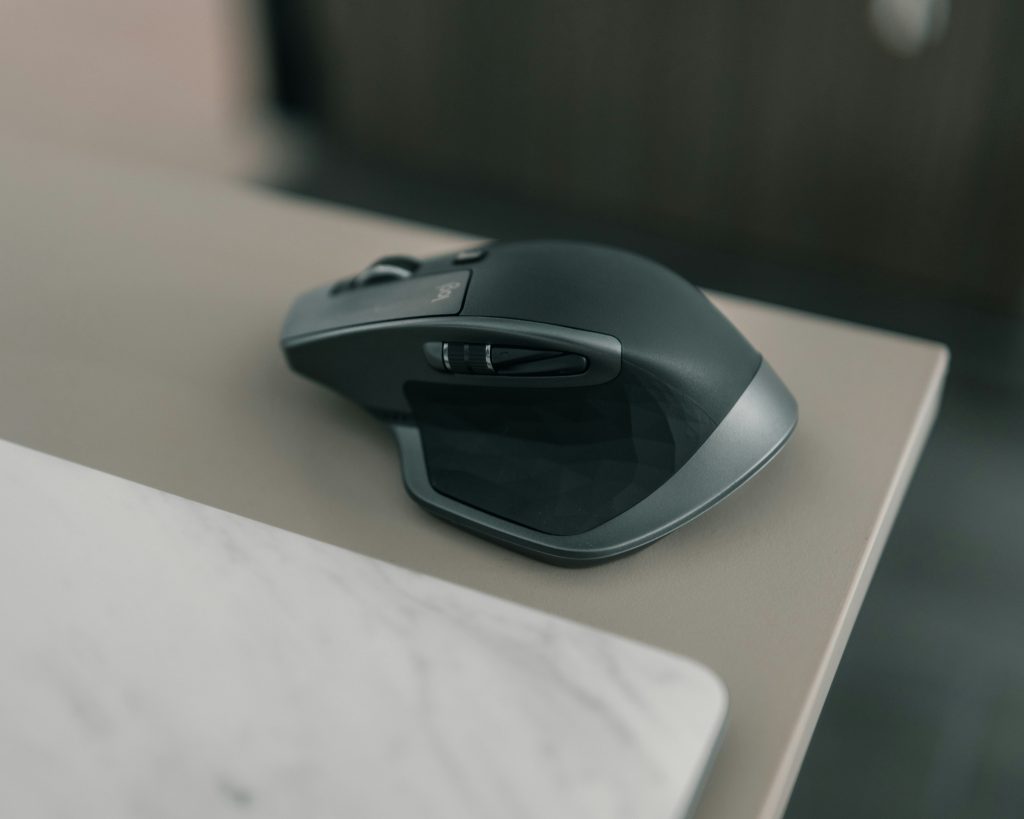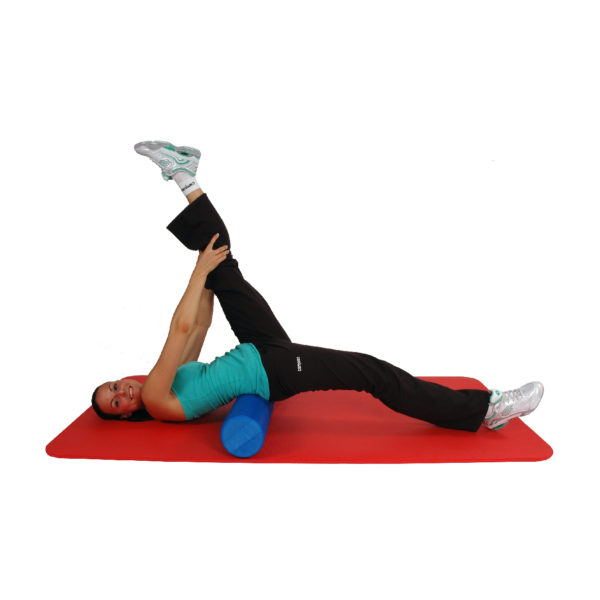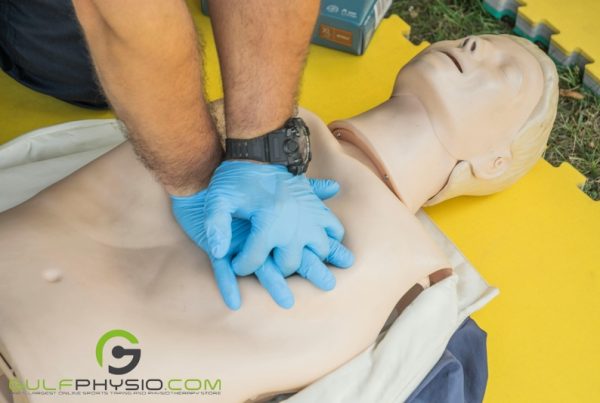
If you are someone who uses a laptop, desktop, tablet, gaming console, or phone all day, there is one thing you may have in common: feeling pain or tension in the neck. Using technology without proper posture and ergonomic tools can be at risk of a condition called tech neck. Other health websites use the term, text neck if it refers to neck pain after excessively using mobile phones with incorrect posture.
If left unresolved, it could cause serious musculoskeletal conditions in the spine and may even cause mobility problems. Luckily, there are ways to prevent it or treat it before tech neck worsens and affects other parts of the body.
In this blog, GulfPhysio owner and physiotherapist Kieran Sheridan explains what tech neck is and how to address it before it worsens.
What is tech neck?

Tech neck is a global problem that usually hits the business and school sectors. A study cited data that 7 in 10 students and 6 in 10 people who work from home experience neck or back pain due to prolonged use of devices.
Another study warned that the tech neck has already increased in the last ten years, which makes it an urgent health problem that needs to be solved.
The number one cause of tech neck is the wrong posture when using devices for a long time. For example, the way we look at our devices such as phones is at a 45-degree angle because we tend to look down. As a result, our neck suffers from the force of the head’s weight, which is over 50 to 60 pounds when the neck can only take about 10 to 12 pounds of weight in an upright position.
In relation to this, a journal from Ergonomics found that people who text for a long time are highly susceptible to having neck pain compared to browsing on the phone compared to web browsing and watching videos on a smartphone. The reason behind this is texting requires two hands which can contribute to bad posture, especially when they are sitting.
According to a study, tech neck can worsen and can affect the body, which can lead to cervical spine disorders, headaches, dizziness, visual disturbance, and musculoskeletal pain. Over time, tech neck can affect children as they get older, which can worsen the symptoms and contribute to mobility problems.
What are the symptoms of tech neck?

If you are a member of the industries that are vulnerable to tech neck, here are some symptoms you need to watch out for.
The first is discomfort or pain in the neck and upper extremities of the body. According to a healthcare journal, pain is more common in the neck, followed by the shoulders and lower back.
The journal also mentioned headache as one of the symptoms due to muscle tension in the neck and the shoulders.
The third symptom is eye problems which include dry eyes, eye strain, and nearsightedness.
Another symptom of tech neck is electromagnetic effects from using phones or other devices. This can cause stress, anxiety, difficulty sleeping, weakened immunity, dizziness, and more.
Psychological symptoms can also be observed in those suffering from tech neck. Having mental wellness issues such as irritability and poor communication.
How to prevent tech neck?
Tech neck may not be life-threatening but it can impede daily tasks due to its effects on the body. It’s best to prevent it to ensure a healthy working or school environment.
Posture

According to 360 Orthopedics, one way of combating neck issues is correcting posture. Improving a person’s posture while using gadgets can help them overcome the causes of neck pain.
If you are using a computer, the health website recommends sitting up straight in a slightly reclined position for the chair. This will allow your head to face the computer or laptop in a straight position instead of hunching the back and looking down at the screen, which can contribute to pressure on the neck.
Sheridan advised adding lumbar support like a pillow or a towel to support the back and promote better posture.
On the other hand, when using the phone, make sure to raise the phone so that it is at eye level, diminishing the movement of the head to go downward just to read the contents of your screen.
Stretching
Another way to decrease tech neck risk is stretching. According to a study about neck pain during online classes, stretching can help prevent neck pain because it is the type of treatment used to enhance the flexibility of tissues and muscles. It can help address being sedentary while using a device for a long time, which can cause poor blood circulation, joint pain, and inflammation.
Sheridan recommends a seated neck release to strengthen the muscles in the neck further and decrease the risk of injury.
To do this stretch, start by standing with the feet shoulder-width apart. You can also choose to sit down while doing a proper sitting position. Drop the left ear to your shoulder. To enhance this stretch, press down on the head with the left hand. Hold this position for 30 seconds and do it again on the other side.
Limit device use and take frequent breaks
A journal from the International Journal of Environmental Research and Public Health also recommends standing up once in a while to take a break and limit the use of devices when you can.

Sheridan recommends setting an alarm to take a break every 30 minutes when using this device. Social media detox or other ways to limit using smartphones can also help, Sheridan added.
Another way to prevent immobility while using devices is to accept phone calls while walking to prevent incorrect posture.
Using audiobooks or talking to loved ones through the phone may also help; this may help prevent tech neck because prolonged texting and scrolling on the phone can contribute to neck pain and other musculoskeletal issues.

A study also recommends doing the 20-20-20 rule which means a person should have a 20-second break every 20 minutes and center the eyes on something at least 20 feet away to battle tech neck.
Adjust the position of the device
The study also advised looking for ways or tools to promote the correct placement of the device in such a way that it will relieve the head, neck and upper extremities of the body.
To do this, Sheridan recommends investing in ergonomic tools that will promote proper posture and reduce force on the neck, shoulders, and back.

For example, a chair with armrests that can be adjusted to provide ample support on the shoulders. As mentioned above, the backseat should be reclined in such a way that the head can face forward without looking down at the computer or cell phone.
Another way is putting books under the laptop to add height and to position the screen at eye level.

Sheridan also advised ditching a flat mouse by using an angled mouse. This will prevent carpal tunnel syndrome as well as neck and elbow injuries. This is because the ergonomic mouse will provide a natural feeling while using the computer without straining the neck.
How do you treat tech neck?

If you are already feeling pain, the only way to combat this is through early treatment and diagnosis.
Sheridan advised consulting a physiotherapist or doctor to recommend a tailored treatment for you if you are feeling worsened symptoms.
But there are also other home remedies you can try to correct posture and alleviate tech neck symptoms.
Exercise

For example, yoga and Pilates are effective in reducing neck and back pain. They can help stretch the joints and muscles which can contribute to posture awareness. These routines can also contribute to mental wellness by reducing stress.
Massages

The American Massage Therapy Association recommends massage therapy for treating neck pain. It applies light pressure to the muscles or affected tissues to improve the range of motion and relieve a person of neck pain.
Topical medicines

Some over-the-counter pain relievers can also help address the pain and tension being experienced by muscles. Nonsteroidal anti-inflammatory drugs such as ibuprofen is an examples of these medicines.
Sheridan warns against taking an adequate amount of these drugs to avoid overuse.
Surgery and steroids
Those with worsened neck pain symptoms such as spinal problems and other musculoskeletal issues tend to go to other types of treatments such as surgery and steroid injections to relieve the pain.
How long will it take for neck pain to go away?

Generally, neck pain is not life-threatening but still, it shouldn’t be a condition that should be ignored. Through early diagnosis and treatment, neck pain will go away in a few days or a few weeks.
Research website Versus Arthritis reported that most people who have neck pain can return to their work within 2 to 3 days. It may still depend on the person’s symptoms and type of job.
It recommended workers communicate with their employer to discuss some arrangements to help them return to work or possibly take a few days of time off to allow their neck to be relieved from symptoms.


